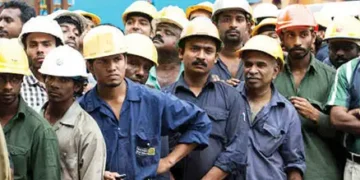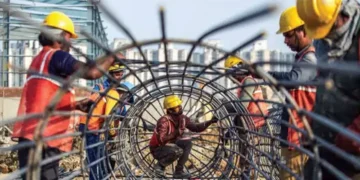Blitz Bureau
NEW DELHI: WITH the rollout of space sector reforms, the Government now permits up to 100 per cent foreign direct investment (FDI) in different segments of the space sector through automatic and Government approval routes, thereby liberalising entry norms for private participation, marking the transition of India’s satcom landscape.
Taking a major step in strengthening the nation’s digital connectivity landscape, Starlink Satellite Communications in June 2025 received a licence to launch satellite internet services in India. Prior to it, Jio Satellite Communication and OneWeb India Communications have been granted licence for providing such services. As of April 2025, more than 10 satellite operators have shown interest and applied for authorisation to provide satellite capacity in the counry.
The entry of private-sector players in the space sector marks a significant step towards Viksit Bharat 2047, setting the stage for a seamless rollout of highspeed satellite broadband across the nation. The transitioning satcom landscape underscores the Government’s focus on fostering innovation and next-generation technologies.
Government initiatives The Government has launched several initiatives to extend mobile and internet connectivity to the nation’s remotest areas, empowering individuals and communities alike. In today’s digital era, such connectivity serves as a catalyst for socioeconomic development, unlocking access to education, healthcare, and economic opportunities.
Digital Bharat Nidhi: Under Digital Bharat Nidhi, the Government is implementing various schemes for the expansion of broadband facilities through installation of 4G mobile towers in the rural and remote areas. For island regions: Under the Comprehensive Telecom Development Plan (CTDP), satellite bandwidth augmentation executed by BSNL increased capacity from 2 Gbps to 4 Gbps in the Andaman & Nicobar Islands and from 318 Mbps to 1.71 Gbps in Lakshadweep.
For NE regions: The Government has implemented CTDP for providing mobile connectivity to villages and areas along National Highways with the objective of extending mobile network access to underserved population. NBM 2.0: The National Broadband Mission 2.0 was launched on January 17, 2025, after the successful completion of NBM 1.0 with the goal of extending broadband services to the remaining 1.7 lakh villages across the country.
BharatNet project: Funded under DBN, BharatNet is an ambitious project aimed at providing affordable high-speed internet access to every Gram Panchayat in the country, bridging the gap between urban and rural communities.
PM-WANI: The Prime Minister Wi-Fi Access Network Interface is designed to create a network of public Wi-Fi hotspots across India. It aims to make affordable and reliable internet access available to citizens, fostering digital participation and economic opportunities. More than 3.73 lakh PM-WANI Wi-Fi hotspots have been installed in the country, as of September 2025.
Weather warnings The Ministry of Earth Sciences (MoES) has developed a Geographic Information System (GIS)-based Decision Support System (DSS). It uses internet connectivity to deliver timely and impact-based early warnings for extreme weather events. The system relies on historical data, real-time observations, radar, and satellite imagery. It helps disaster-prone states monitor risks and take measures to protect lives, livelihoods, and infrastructure.
Together, these efforts underscore India’s commitment to employing satellite communication to strengthen digital infrastructure and improve public services. India’s broadband reach is steadily expanding through high-throughput satellites (HTS) developed by ISRO, which use advanced spot-beam technology to provide faster speeds and higher capacity. The country has a fleet of 19 operational communication satellites, among which GSAT-19, GSAT-29, GSAT-11, and GSAT-N2 are specifically geared towards boosting India’s broadband services.
These satellites are designed to enhance internet connectivity in underserved areas, support in-flight communication, defence networks and disaster management. Together, they form the backbone of satellite-based broadband infrastructure in India.
































